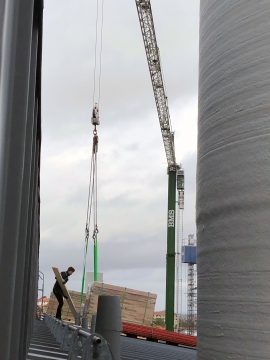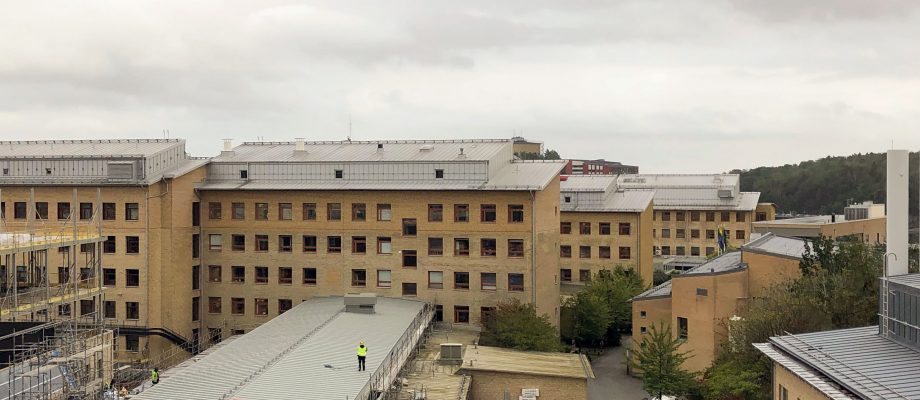SUSTAINABLE DEVELOPMENT. As part of a broad investment in solar cells for the property portfolio of Akademiska Hus, it is now Medicinareberget’s turn. The high-rise buildings along Medicinarlängan will have solar panels installed on their roofs, and energy from the sun will be sent straight to the buildings’ electrical grid.

Work to install the solar cells will take a couple of months, but the staff at Medicinareberget will not be disturbed by the ongoing work until the large assemblies of solar panels are hoisted onto the roofs of the buildings. The next step for Akademiska Hus is erection of railings around the roofs for the safety of the workers. Then the panels will be attached to aluminum supports fastened to the roofs’ sheet metal seams.

“The panels are connected to each other, and the direct current generated flows to an inverter that changes it to regular alternating current. The electricity passes directly through a cable to the switchgear in the building’s basement for use in the local electrical grid in the same building,” says Jonas Hansson, electrical engineer at Akademiska Hus.
Energy-intensive activities
If a building does not consume the electricity produced on its roof, this electricity is sent on to the next building in the electrical grid on Medicinareberget, which Akademiska Hus owns.
The panels on Medicinarelängan’s high-rise roofs will generate 240 megawatt hours (MWh) per year, which equals 240,000 kilowatt hours (kWh). This corresponds to the electricity consumption for nearly twenty ordinary homes. That still represents a small part of the total amount of electricity that activities at Medicinareberget consume. For the buildings along Medicinarelängan alone, annual electricity consumption is approximately 6,000 MWh.
“The more solar cells Akademiska Hus has, the less electricity we need to buy from our electricity supplier. From a financial perspective, we expect the investment to pay off in slightly more than 10 years,” says Hansson.
Advances in technology
Sahlgrenska Academy’s Environmental Council had previously considered installing solar cells on Medicinareberget’s rooftops. At the time, Akademiska Hus determined that the investment was not justified, based on the design of the roofs, shade on them, and a slope that was not optimal for solar cells. Since then, however, both the technology and prices have improved significantly. As a rough estimate, the theoretical peak power for solar cells has doubled in 10 years, while the price has been cut in half. Now roofs no longer need to slope southward for the solar cells to generate sufficient power.

“The fact that we are now installing solar cells on the roofs is a very positive step,” says Rita Grander, environmental coordinator at Sahlgrenska Academy. “We are very pleased that some of our activities can be run using locally produced, renewable energy. Though manufacturing solar cells causes some carbon dioxide emissions, the solar cell compensates for that after slightly more than a year through the generation of fossil-free energy.”
Solar cells on more and more roofs
More rooftops on Medicinareberget are now being investigated for solar cells, including those at the Lundberg Laboratory. These roofs have smaller areas on different levels, which cause more shade.
Akademiska Hus is currently investing heavily in solar cell installations in its property portfolio, in step with technological and financial developments. It currently has around 70 facilities that generate 6 million kWh of sustainable electricity for Swedish higher education institutions every year. When all the solar cell facilities planned by Akademiska Hus are ready, the total solar energy they generate will amount to over 10 million kWh per year.
BY: ELIN LINDSTRÖM











